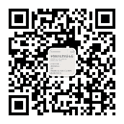| 基金项目: |
|
| 摘要点击次数: 2175 |
| 全文下载次数: 387 |
| 中文摘要: |
| 目的 探讨人工智能图像教学系统在临床医学本科生骨髓细胞形态学教学中的应用效果。方法 将110名临床医学五年制本科学生平均分为实验组(人工智能图像教学系统教学)和对照组(传统教学),进行骨髓细胞形态学教学。实验组在多媒体教学的基础上,组织学生运用骨髓细胞形态学图片储存和传输系统进行检索、学习、自适应考试。对照组采用传统多媒体教学和显微镜读片。针对两组学生实施读片客观考核和教学满意度问卷调查,比较教学效果。结果 实验组学生骨髓细胞形态学读片成绩为(89.6±5.7)分,对照组学生骨髓细胞形态学读片成绩为(81.4±4.9)分,差异具有统计学意义(P<0.01)。在细胞形态识别和血液病诊断两种题型中,实验组学生均表现出明显优势[细胞形态学部分(74.7±4.0) vs. (68.7±4.9);血液病诊断部分(14.9±3.0) vs. (12.9±2.4)],差异具有统计学意义(P<0.01)。问卷调查显示,学生对应用人工智能图像教学系统进行骨髓细胞形态学教学表示肯定和支持。结论 应用人工智能图像教学系统进行临床医学细胞形态学教学,能极大地提高教学效果,调动学生学习积极性,拓展学习资源,值得进一步推广和应用。 |
| 英文摘要: |
| Objective To explore the effect of artificial intelligence teaching-picture system in training the bone marrow cell morphological reading ability of clinical medical students. Methods A total of 110 five-year undergraduate students were divided into experimental group (artificial intelligence picture teaching method) and control group (traditional teaching method) in the bone marrow cell morphology reading ability training. On the basis of multimedia teaching, the experimental group was given the teaching by using the bone marrow cell morphology picture storage and transmission system for retrieval, learning and computer adaptive test. Then objective evaluation of image recognition ability and questionnaire were used to compare the teaching effect. Results The image recognition ability was significantly better in the experimental group than in the control group [(89.6±5.7) vs. (81.4±4.9), P<0.01]. Furthermore, the experimental group showed more obvious advantages in cell morphology recognition [(74.7±4.0) vs. (68.7±4.9)] and diagnosis of hematological diseases [(14.9±3.0) vs. (12.9±2.4)] than the control group (both P<0.01). Questionnaire survey showed that the students expressed their affirmation and support for the artificial intelligence teaching-picture system in the bone marrow cell morphological reading ability training. Conclusion The application of artificial intelligence teaching-picture system can greatly improve the teaching effect, mobilize students' learning enthusiasm and expand learning resources, which is worthy of further promotion and application. |
|
查看全文 查看/发表评论 下载PDF阅读器 |
|
| 关闭 |
|
|
|
